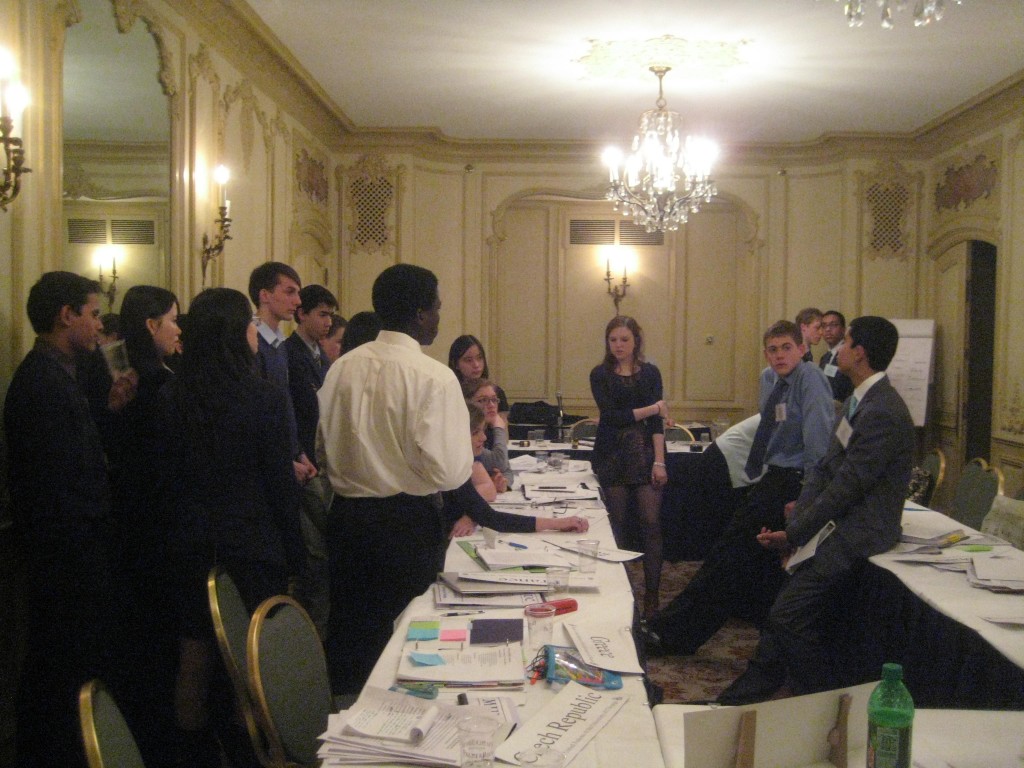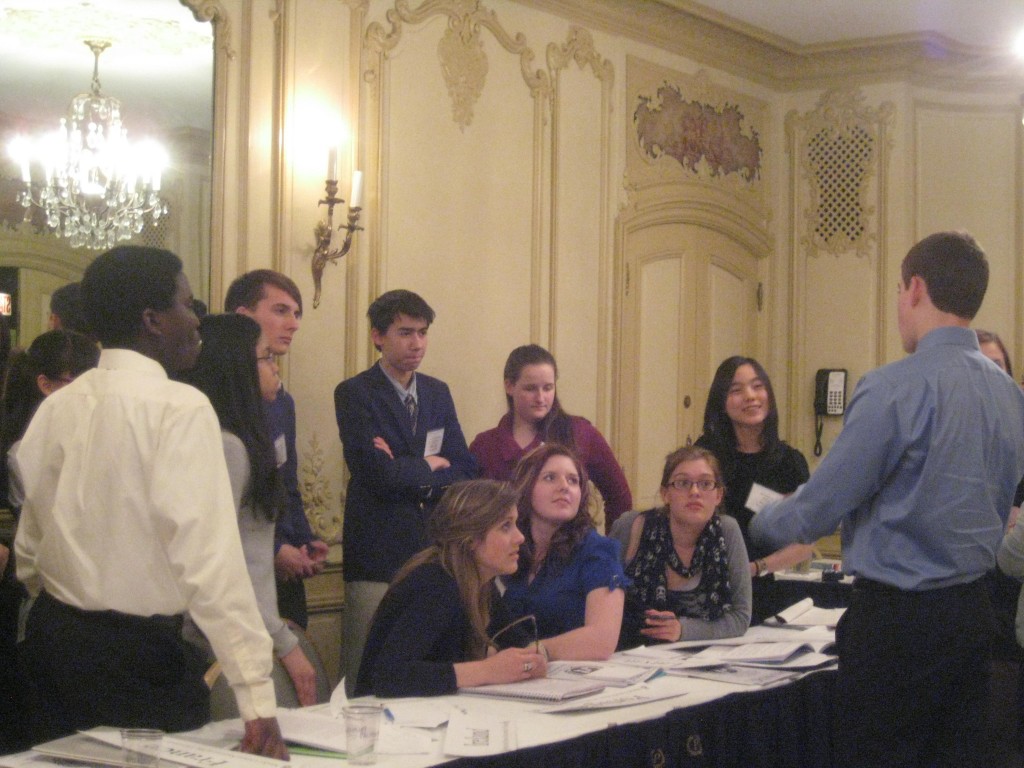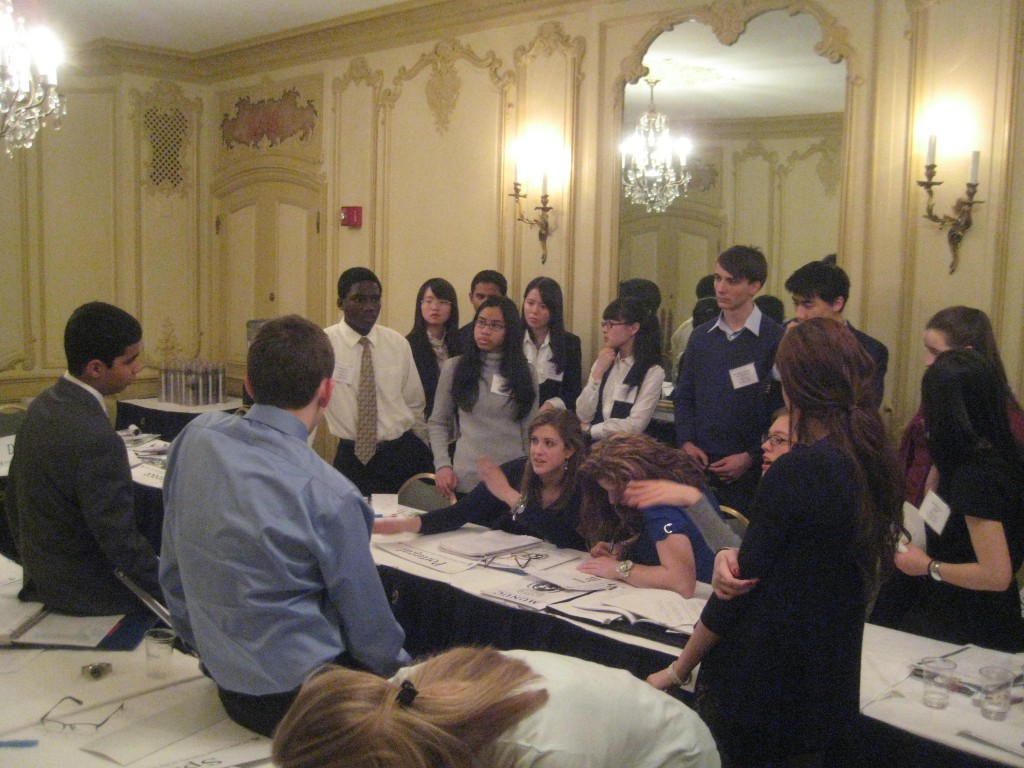Step 1: Position yourself strategically. Notice that the room is physically divided by tables. Tables are natural barriers for one side to be the authority and the other side to be followers — that’s why authority figures usually sit behind their office desk when they have a serious conversation with you. Below, several delegates (right side of photo) have positioned themselves in the center — behind the table of authority — and everyone else is on the other side looking at them.
Step 2: Frame the discussion. Strategic positioning alone will not make you the leader of the caucus bloc. You have to start framing the discussion for the group — you have to determine what are the important sub-issues you want the group to address. That way delegates listen to you — and follow the conversation that you started. You can read more about framing your topic in our article here, and we explain the concept in depth in our guide to Winning Awards. Here, notice how everyone’s attention is on the bloc leader (blue shirt on the right) when he speaks.
Step 3: Empower Others. In a committee, the Chair doesn’t do most of the talking — it’s the delegates who do. Similarly, if you are “chairing” your caucus bloc, you need to get others involved by calling on them to ask them what they think of certain issues. Delegates will appreciate that you are looking for their ideas and will see you as a leader they can trust. Notice how the delegate sitting down in the middle (black shirt) is speaking but most of the other delegates are still looking at the caucus bloc “chairs” on the other side of the table.
[Editor’s note: we provide an analysis on the strategic positioning of the girl in the black shirt at the end of this article.]Delegates can display hard leadership over a team by positioning themselves in the middle of the action, or they can display soft leadership by empowering others — they can ask others to speak and jump in with their opinions. Delegates who do this have essentially become like a “Chair” and are now “moderating” the unmoderated caucus bloc; they get to influence who gets to speak next — and when they get to speak, too.
**
Editor’s Note: While the girl in the black shirt sitting in the middle is not in the optimal location for caucusing, she still at an advantageous position. Her position at the literal center of the caucus bloc can serve her effectively in two ways:
1) She can be the hub of the group when it comes to writing draft resolutions. She’s at the center of the conversation and can easily capture all the ideas mentioned during caucus, and she has the best access to the table if she wants to literally write the draft resolution.
2) She can project power against the “chairs” of the bloc if she wants to get a point across. She is literally backed by almost the rest of the committee, so if she challenges one of the delegates behind the table, the rest of the caucus bloc will be looking at them to respond too. This increases the pressure on those delegates behind the table to perform as they now have to answer not just to her but to the rest of the caucus bloc behind her.





